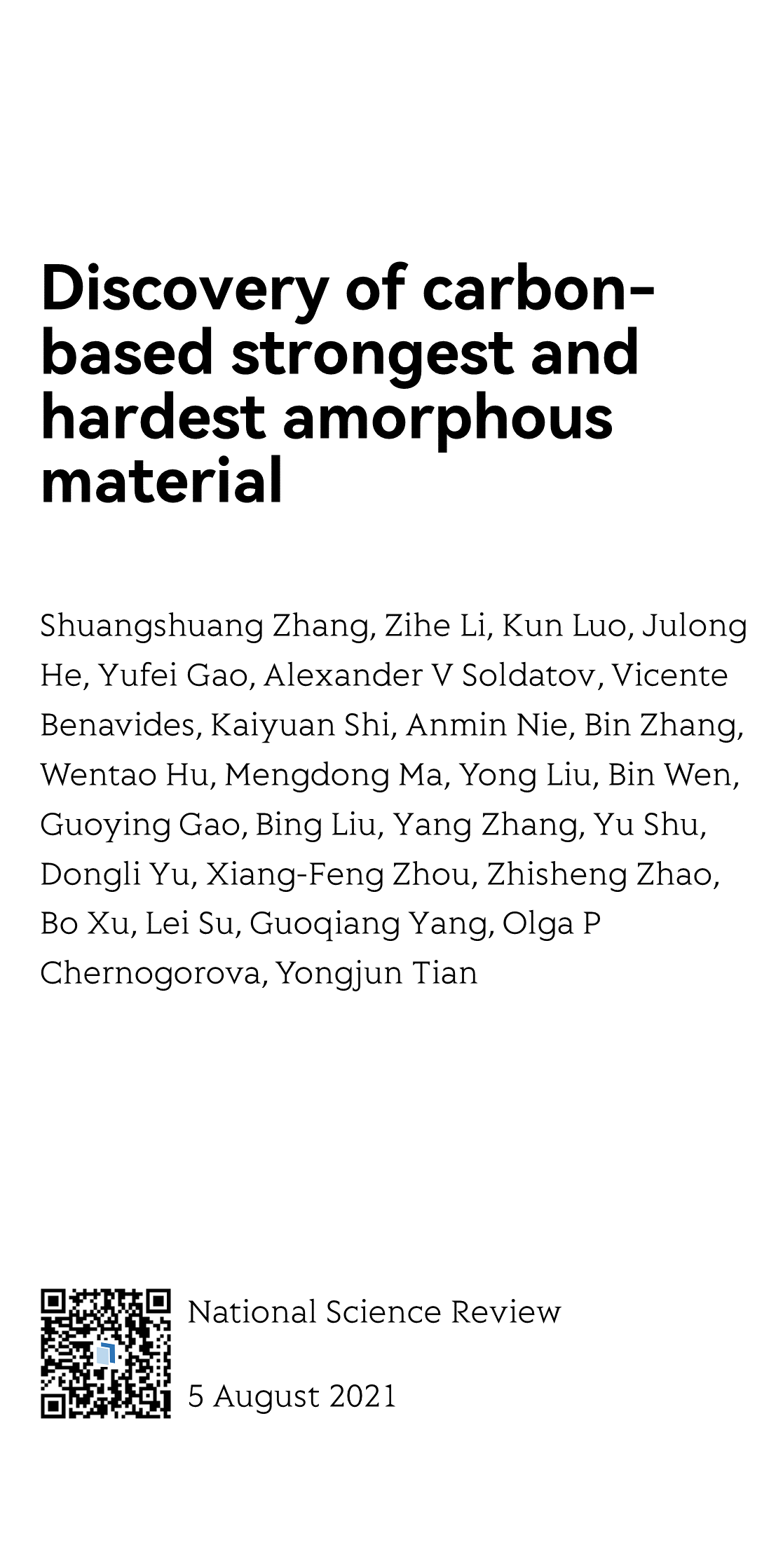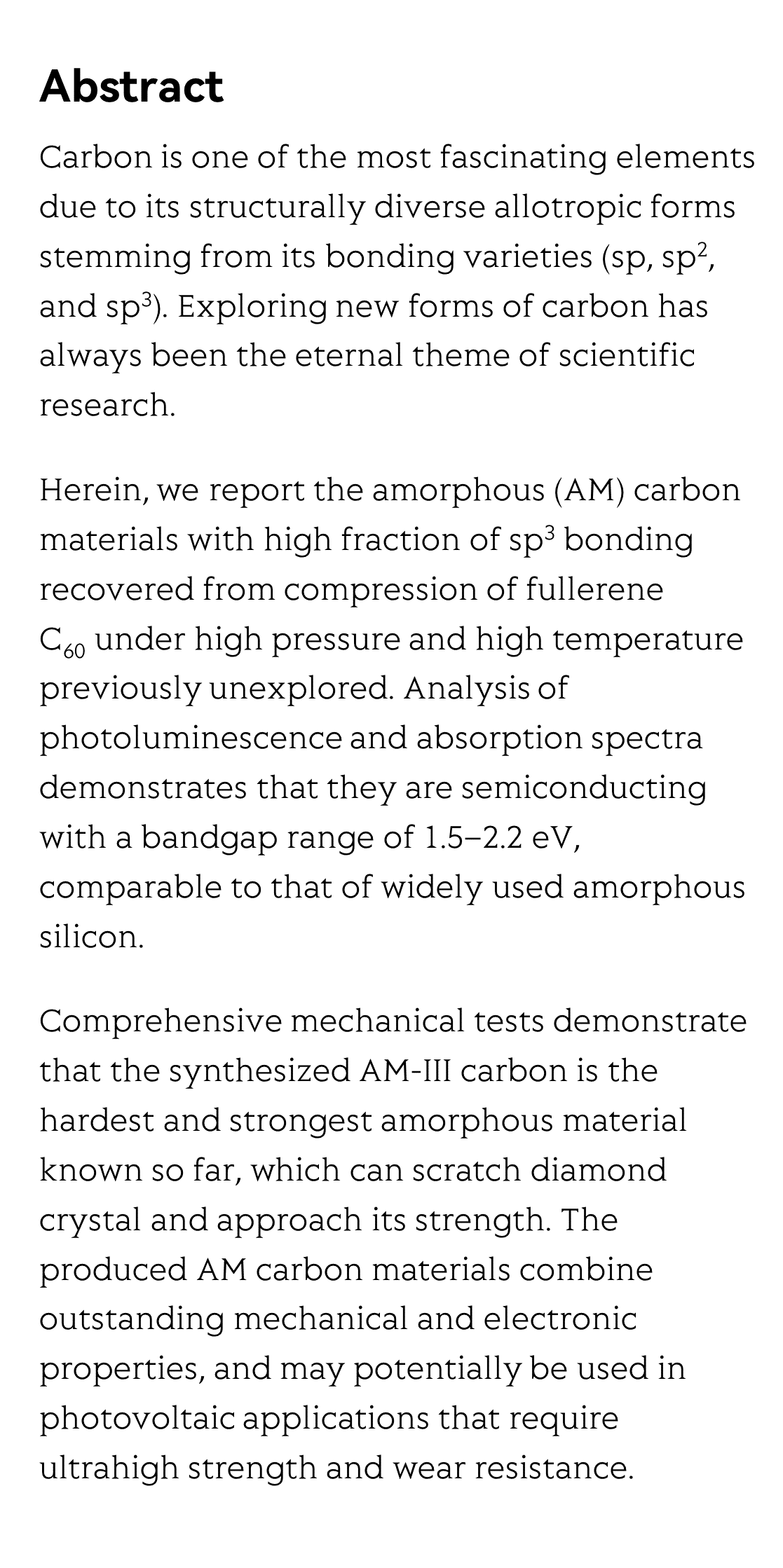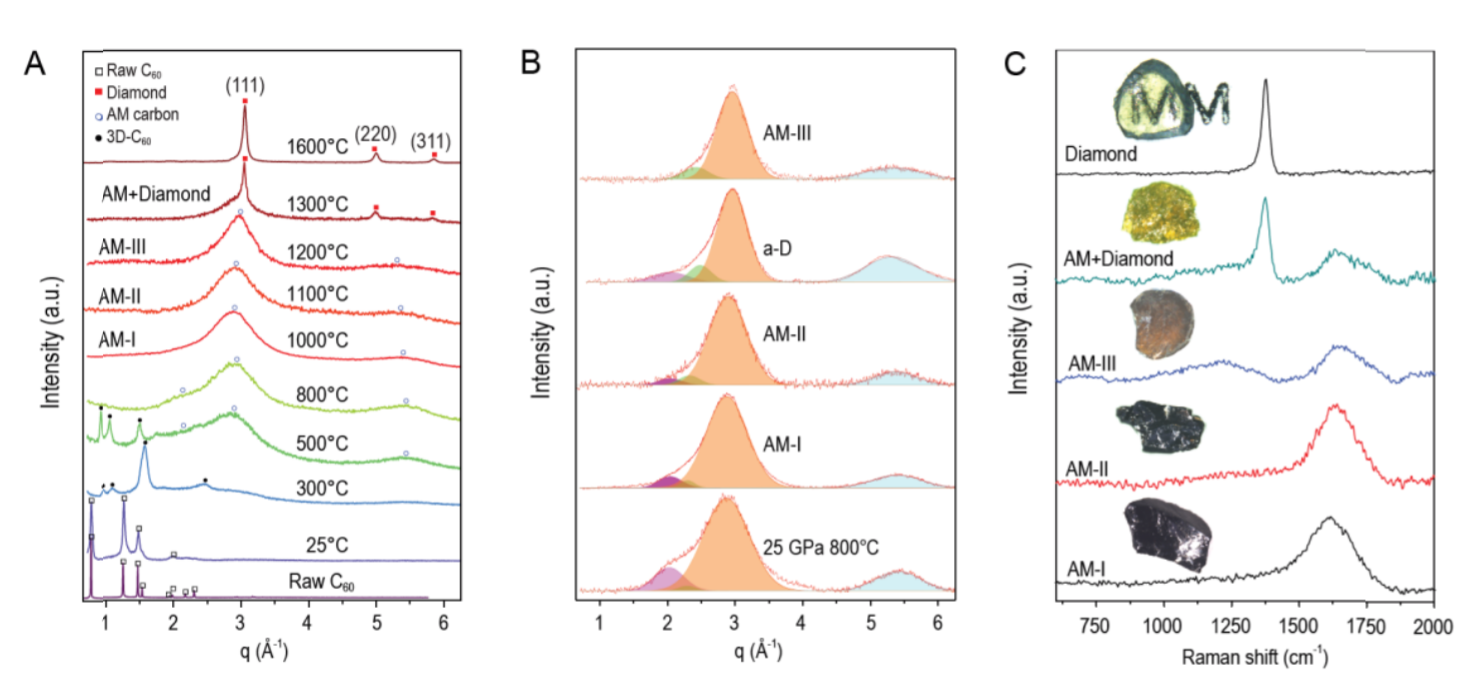Shuangshuang Zhang 张爽爽 ¹, Zihe Li 李子鹤 ¹, Kun Luo 罗坤 ¹ ², Julong He 何巨龙 ¹, Yufei Gao 高宇飞 ¹ ², Alexander V. Soldatov ¹ ³ ⁴ ⁵, Vicente Benavides ³ ⁶, Kaiyuan Shi ⁷, Anmin Nie 聂安民 ¹, Bin Zhang ¹, Wentao Hu 胡文涛 ¹, Mengdong Ma 马梦冬 ¹, Yong Liu 刘永 ², Bin Wen 温斌 ¹, Guoying Gao 高国英 ¹, Bing Liu 刘兵 ¹, Yang Zhang ¹ ², Yu Shu 舒予 ¹, Dongli Yu 于栋利 ¹, Xiang-Feng Zhou 周向峰 ¹, Zhisheng Zhao 赵智胜 ¹, Bo Xu 徐波 ¹, Lei Su 苏磊 ⁷, Guoqiang Yang 杨国强 ⁷, Olga P. Chernogorova ⁸, Yongjun Tian 田永君 ¹
¹ Center for High Pressure Science (CHiPS), State Key Laboratory of Metastable Materials Science and Technology, Yanshan University, Qinhuangdao 066004, China; 燕山大学 亚稳材料制备技术与科学国家重点实验室 高压科学研究中心
² Key Laboratory for Microstructural Material Physics of Hebei Province, School of Science, Yanshan University, Qinhuangdao 066004, China; 燕山大学 理学院 河北省微结构材料物理重点实验室
³ Department of Engineering Sciences and Mathematics, Luleå University of Technology, Luleå SE-97187, Sweden;
⁴ Department of Physics, Harvard University, Cambridge, MA 02138, USA;
⁵ Center for High Pressure Science and Technology Advanced Research, Shanghai 201203, China; 上海高压科学与技术先进研究中心
⁶ Department of Materials Science, Saarland University, Saarbrücken D-66123, Germany;
⁷ Key Laboratory of Photochemistry, Institute of Chemistry, University of Chinese Academy of Sciences, Chinese Academy of Sciences, Beijing 100190, China; 中国科学院化学研究所 光化学重点实验室
⁸ Baikov Institute of Metallurgy and Materials Science, Moscow 119334, Russia
National Science Review, 5 August 2021



